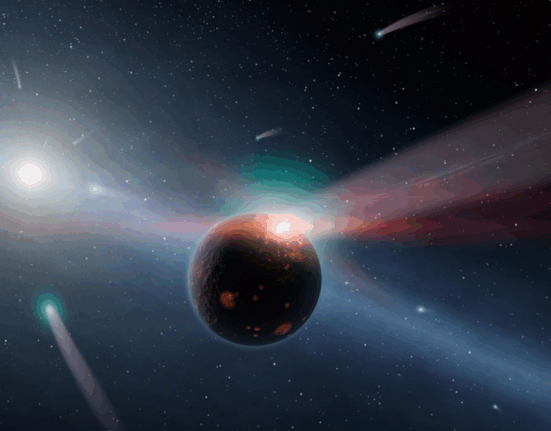The barren, rust-colored landscapes of Mars may hold clues to ancient life within their thick layers of clay. These mineral-rich formations, discovered on the Red Planet, hint at a time when Mars might have been more hospitable to living organisms.
According to a recent study conducted by researchers at the University of Texas’ Jackson School of Geosciences, these clay deposits date back approximately 3.7 billion years ago when Mars experienced warmer and wetter conditions than it does today. The presence of liquid water is crucial for the formation of clays, indicating that Mars could have once supported habitable environments for extended periods.
Rhianna Moore, one of the study’s co-authors, highlighted the significance of these stable terrains where clay minerals are found. She explained,
“If you have stable terrain, you’re not messing up your potentially habitable environments.”
This stability suggests that favorable conditions conducive to life may have persisted over long durations on Mars.
Tim Goudge, another co-author of the study, emphasized how similar clay deposits form on Earth in specific environmental settings. He noted that on our planet, thickest clay sequences are typically associated with humid regions and minimal erosion processes that can preserve these geological features over time.
The research team examined 150 clay deposits using data from NASA’s Mars Reconnaissance Orbiter. By analyzing the shapes and locations of these formations in relation to ancient lakes and rivers on Mars, they discovered that most clays are situated in low-lying areas near standing bodies of water but away from high-energy water flow channels.
In their published findings in Nature Astronomy journal, the researchers proposed that intense chemical weathering processes likely contributed to preserving these ancient clays on Mars by inhibiting physical erosion mechanisms. This unique balance between chemical weathering and climate activity may have favored the sustained existence of clay minerals across Martian landscapes.
Unlike Earth’s dynamic tectonic processes that facilitate carbonate mineral formation through rock-water interactions regulating atmospheric CO2 levels over time; Mars lacks such mechanisms due to its dormant tectonics. This absence has implications for understanding Martian climate history as CO2 released by volcanic activity could have remained in the atmosphere longer periods contributing to past warm and wet conditions ideal for clay formation.
Moore speculated about how clays on Mars could hinder carbonate mineral formation by absorbing water and trapping certain chemical elements preventing them from reacting with surrounding rocks—a phenomenon explaining why carbonates are scarce compared to predictions based on terrestrial analogs.
Through their study, researchers shed light on how Martian environments evolved over billions of years shaping unique geological features like clay deposits—an intriguing window into a distant world’s potential for hosting life or preserving evidence thereof.









Leave feedback about this